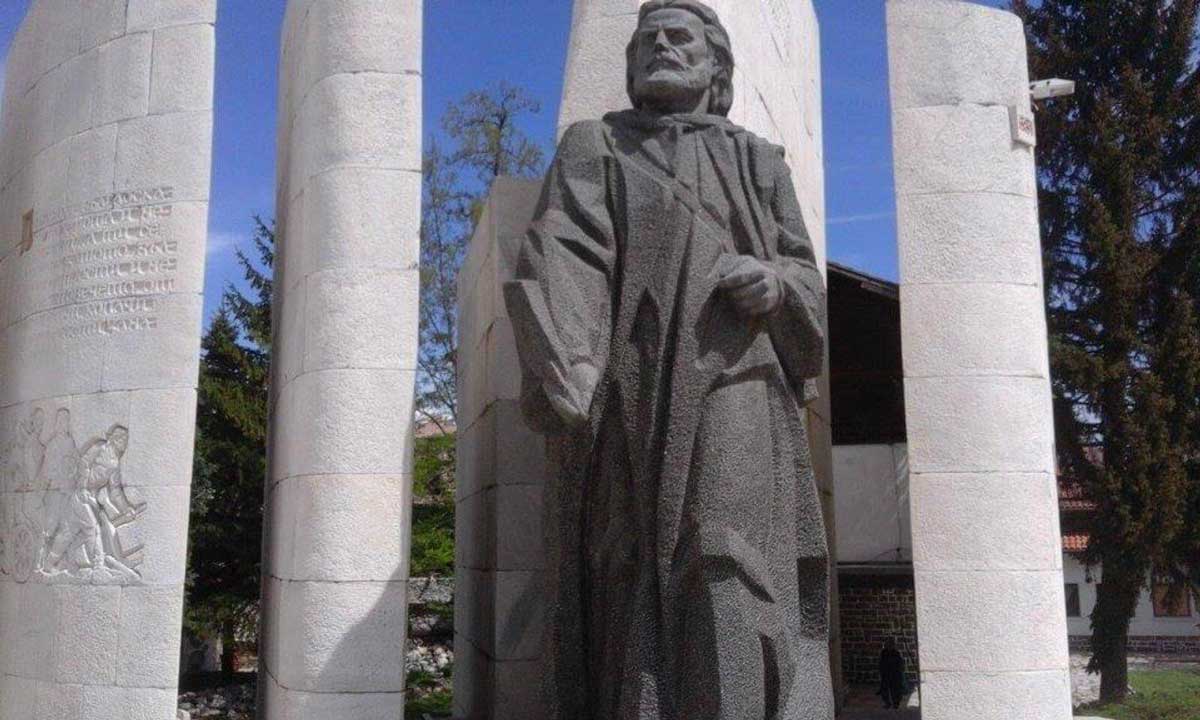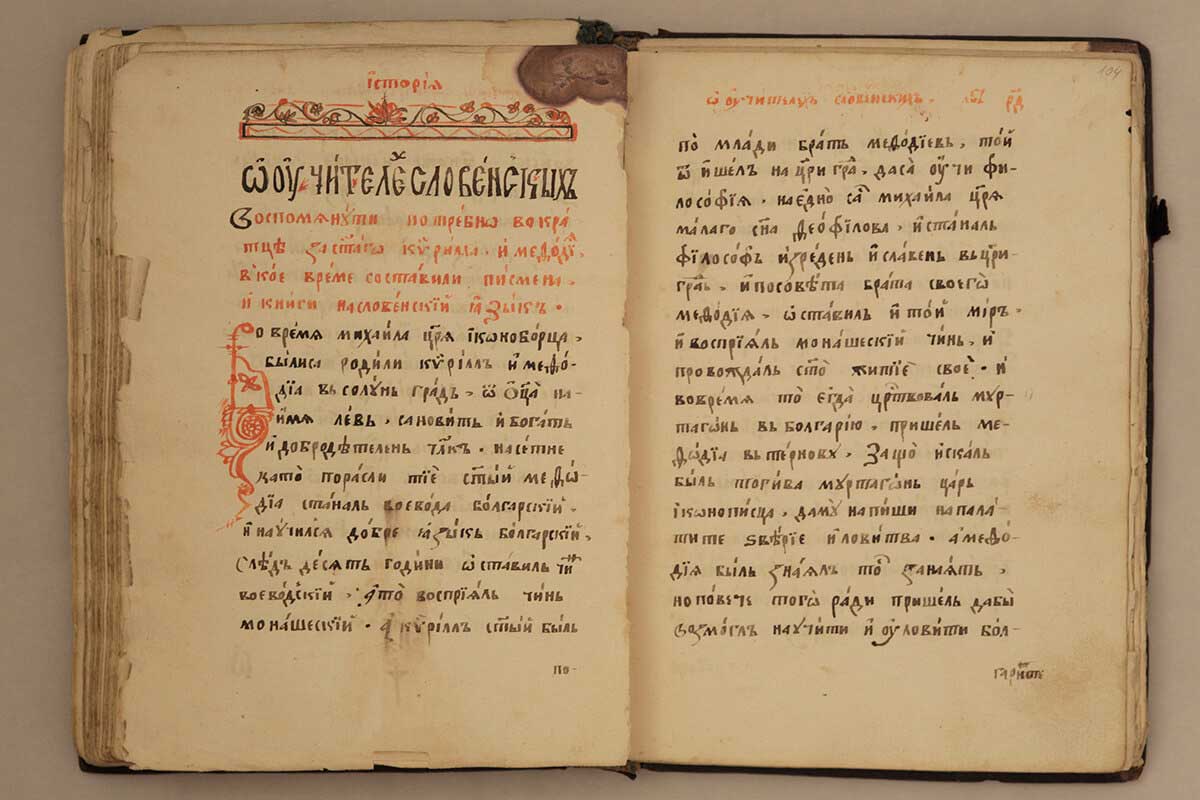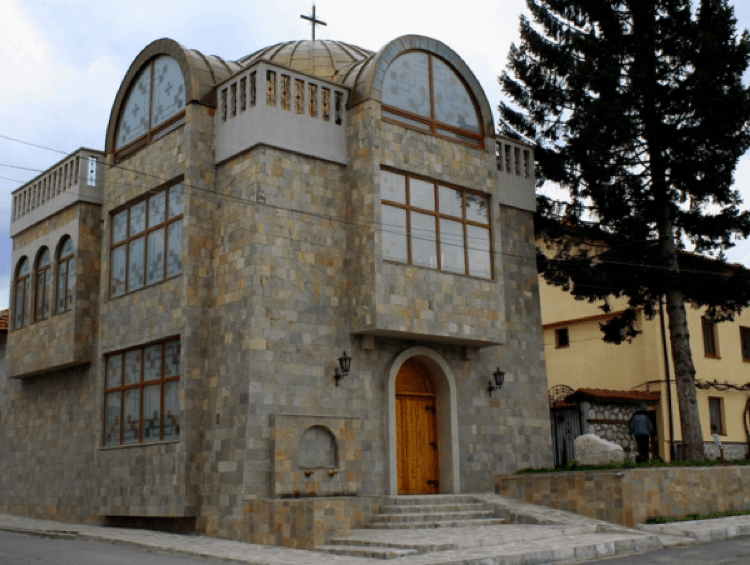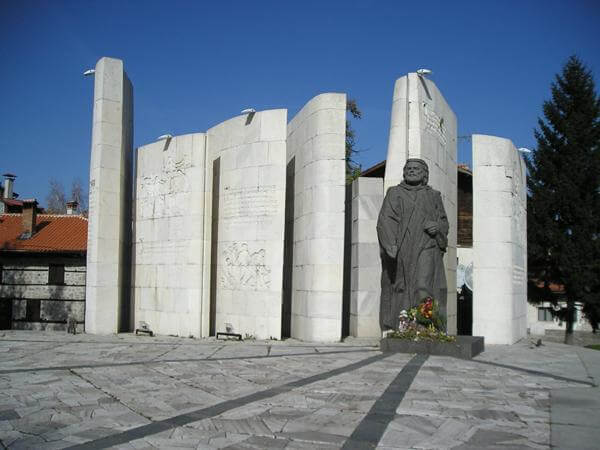Bansko – the home of the creator of the Slavonic-Bulgarian History
Bansko – the place where the author of Slavonic-Bulgarian History gave the beginning of the Bulgarian Revival
The famous in Bulgaria and abroad mountain resort Bansko, besides its glory of a beautiful ski resort, offering a variety of tourist attractions and entertainment in every season, has a rich historical past. Bansko has been an important cultural center where Bulgarian culture, art and spirituality were revived. The picturesque resort is home to one of the most prominent Bulgarian people who have left a deep footprint in Bulgarian history.
In the center of the beautiful Bansko resort, the monument of Paisiy Hilendarski was built, as well as the memorial museum, built in honor of his great work.
History of creating the memorial of Paisiy and his memorial museum
The monument of St. Paisiy Hilendarski was made by the Bulgarian sculptor Stoycho Todorov and was finished in 1976. There is speculation that the home of Paisiy Hilendarski was located around the site where the monument was built. The monument represents the author of Slavonic-Bulgarian History standing in full stature against and several large pages of his famous book are in the background.
What else can we find in Bansko related to Paisiy?
In Bansko there is another historical site dedicated to the memory of the saint – a memorial museum of Paisiy Hilendarski, also called the St. Paisius of Hilendar spiritual and historical center. The museum is located at the place where Paisiy’s father’s home was located.
It is at this place that Paisiy Hilendarski wrote the Slavonic-Bulgarian History in 1762.The visit to this place brings everyone back in those times when Paisiy wrote the history of his people. The recreation of the cell in which he wrote Slavonic-Bulgarian History is a place of immeasurable value.
What can be seen in the memorial museum of Paisiy Hilendarski?
Visitors to the museum can also see an authentic copy of the cell of Paisiy Hilendarski in the Hilendar Monastery where he lived and wrote the history, as well as theSt. Ivan RilskiChapel, where he ottered up his prayers to God. The museum also keeps a piece of the holy land of Mount Athos.
The memorial museum of Paisiy, besides the monastic cell and the chapel, also keeps portraits of prominent inhabitants of Bansko, who have played an important role in history. On the third floor of the Paisiy Memorial Museum there is a modern functional educational room for educational lectures. It hosts lectures on outstanding personalities from Bansko and film screenings.
The memory of the two brothers of Paisiy – the generous donor Hadzhi Valcho, who was a wealthy merchant and had a rich historical past and his brother, Lavrentius, or known as Lazar, who was the abbot of the Hilendar Monastery, have found their place in the museum.
The memory of Lavrentius has been immortalized by Paisius in the afterword of his Slavonic-Bulgarian History: “And I composed it in the Hilendar Monastery of Abbot Lavrentius, my brother from the same mother and older than me. He was then 60 years old, I was 40”.In fact, Lavrentius was a hieromonk, a taxidermist, and as he leads a pure and virtuous life, he was elected Abbot of the Hilendar Monastery in the period 1761-1762.
The other brother of Paisiy,Hadzhi Valcho, began between 1756-1757 a large-scale construction in Hilendar. Before this year, he had built an inn for free accommodation for caravans and merchants named Caravan Saray near the village of Monolofo in Serres.
Also, in Hilendar, Hadzhi Valcho restored the ruined southern wing of the monastery from the base to the roof, which includes a bell tower and three floors.
The history of creating the Paisiy Museum
In March 1922 the house of Paisiiy Hilendarski was burned down. In the same year, patriotic citizens of Bansko put a stone with the inscription in the place where the house of Paisiy used to be: “Here was the home in which Paisius was born in 1722”. During the liberation of Bansko in 1912, the local voivodes sent a protocol to the National Assembly, in which they presented their wish that Bansko be a town and a district center.
One reason for their action is that Bansko is the birthplace of the great Bulgarians Paisiy Hilendarski and Neofit Rilski who have given their whole life to the Bulgarian people. Another reason is that Bansko has been a defensive fortress of the Bulgarian culture since the beginning of the National Revival.
The district government had been operating in the house of Paisiy for over a year and a half. With the appearance of the memorial museum of Paisiy the wish of the inhabitants of Bansko to create in honor of their great fellow citizen a monument to praise his honorable work is fulfilled.
The museum memorial is consecrated by monks from Mount Athos and services are performed in its chapel. The very idea of creating an exact copy of the cell of Paisiy, where he began writing Slavonic-Bulgarian History at the Hilendar Monastery in Mount Athos, came to Georgi Hristov. He is the chairman of the Foundation fornational, cultural and educational traditions and presents this idea in 1997-98. He works on the plans and projects of the complex. Thanks to his work and the help of the municipality, the memorial dedicated to Paisiy Hilendarski became a reality.
A great contribution to the preservation of the memory and the great work of Paisiy Hilendarski have the Bansko Municipalityand the town’s Museum Complex. The museum complex includes nine sites, one of which is located in Dobrinishte. The director of the museum complex is Assen Koev.
The recreated cell of the great Paisius contains an iconostasis, the table on which he wrote The History, his bed and a hiding place that was under the floor. Unfortunately, the original monk’s cell no longer exists. There are also a number of his church books arranged on a wooden shelf.
More curious facts about Paisiy’s cell
At the place where the destroyed St. Stefan chapel was located, a new one has been built in honor of the great Bulgarian saint Ivan Rilski, very close to the cell of Paisiy. In 1752-1764, the patrioticcitizen of Bansko made large donations to Zograf a few months after the start of the large-scale construction at Hilendar. The eastern wing of Zograph in Mount Athos is known in history under the name Banska Mahala or Hadzhivalchova Mahala. In the southern wing of Hilendar, the name Banska mahala is also mentioned.
The famous professor Mihail Enev tells “Bansko gave Paisiy to the Bulgarians, it gave Hadzhi Valcho, it gave a standard of morals of all time. And why in the 18thcentury namely from Bansko, from the pages of a small book called Historystarted the wave of cultural awakening, which flooded the whole Bulgarian land to overturn the ideas and life of the people and cleared the way to liberation? Because Bansko is a centuries-old center of Bulgarian spirituality, education and culture.”
About the personality of Paisiy Hilendarski
Paisiy Hilendarski was born in Bansko in 1722 in the Samokov diocese, under the laic name of Penko or Petar, and in his remarks in Slavonic-Bulgarian History we find information about his life. In 1758 he traveled to Sremski Karlovci as a mendicant friar, where he read historical works and medieval sources about Bulgarian history, which served him to write his main work.
In 1745, Paisiy went to the Hilendar Monastery, where at the age of 23 he became a hieromonk and later a deputy-abbot. The Slavonic-Bulgarian History was completed in 1762 in the Zograf Monastery after Paisiy left the Hilendar Monastery because of a dispute with the rest of the monks. It is believed that he died in 1773 on his way to Mount Athosin the village St. Georgi (then called Ambelino), which is currently a quarter of Asenovgrad.
The famous citizen of Bansko was canonized as a saint of the Bulgarian Orthodox Church on 26 June 1962. Each year on June 19 we honor the memory of the great saint.
To write his Slavonic-Bulgarian History, Paisiy Hilendarski drew inspiration from historical works such as Cesare Baronio’sAnnales Ecclesiastici and Mavro Orbini’s The Realm of the Slavs. Paisiy’s goal was to awaken the national consciousness of the Bulgarian people and to convince them that there is a reason for high national self-esteem. There are a total of 60 copies of the book, and the first copy was written by Sofroniy Vrachanski in 1765. The first printed edition of the book was published in 1844 under the title Tsarstvenik.
According to the most serious scientific hypothesis in Bulgarian historiography, Paisiy Hilendarski is said to be the son of Mihail Hadzhivalchev and the brother of Lavrentius (Lazar) Hilendarski from Bansko. In other works on local history other settlements are mentioned as the birthplace of Paisiy Hilendarski, but the likelihood of these statements being true is small.
Paisiy – an eternal model of morals
Paisiy has become a symbol of the Bulgarian cultural transition from the Middle Agesto a national liberating cultural and political movement. Unfortunately, Paisiy has given only a few pieces of information in his famous Slavonic-Bulgarian History.
However, given the times and conditions in which he has managed to create this work of his, we can say that this is a great and worthy feat. There he mentions that in 1745 he came to Mount Athos from the Samokov diocese and in 1762 he collected the History “in the Hilendar Monastery, at Abbot Lavrentius, my brother from the same mother and older than me; he was then 60 years old, and I was 40.”
All of you who are interested in the Bulgarian history should definitely visit the monument or memorial museum of Paisiy Hilendarski.
Location
The monument is located in the center of Bansko in the Old Town inul. Nikola Vaptsarov 14, and the museum in ul. Otets Paisiy 21. Next to it is the Nikola Vaptsarov house-museum, authentic houses from the Bulgarian Renaissance period, still intact to this date.



